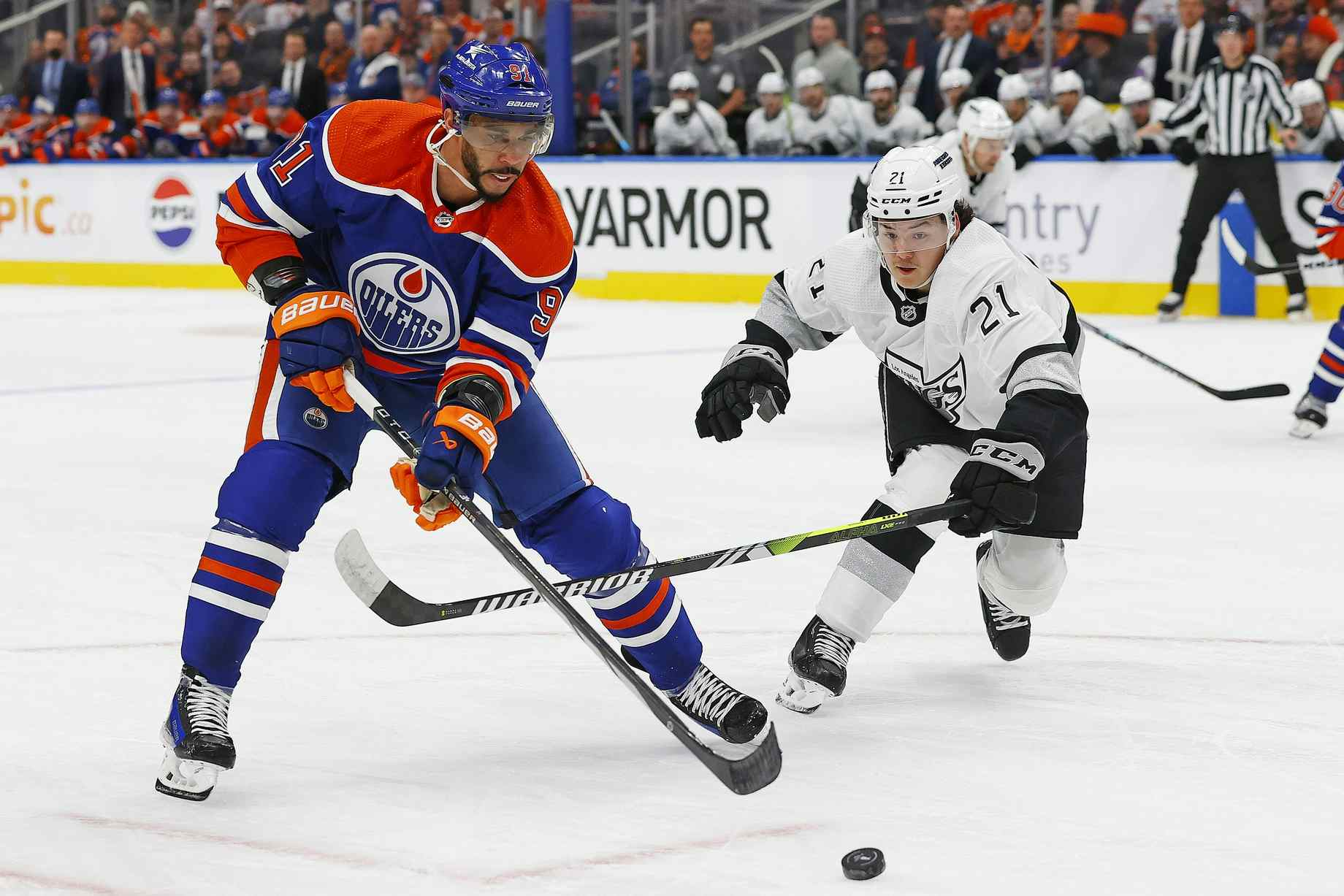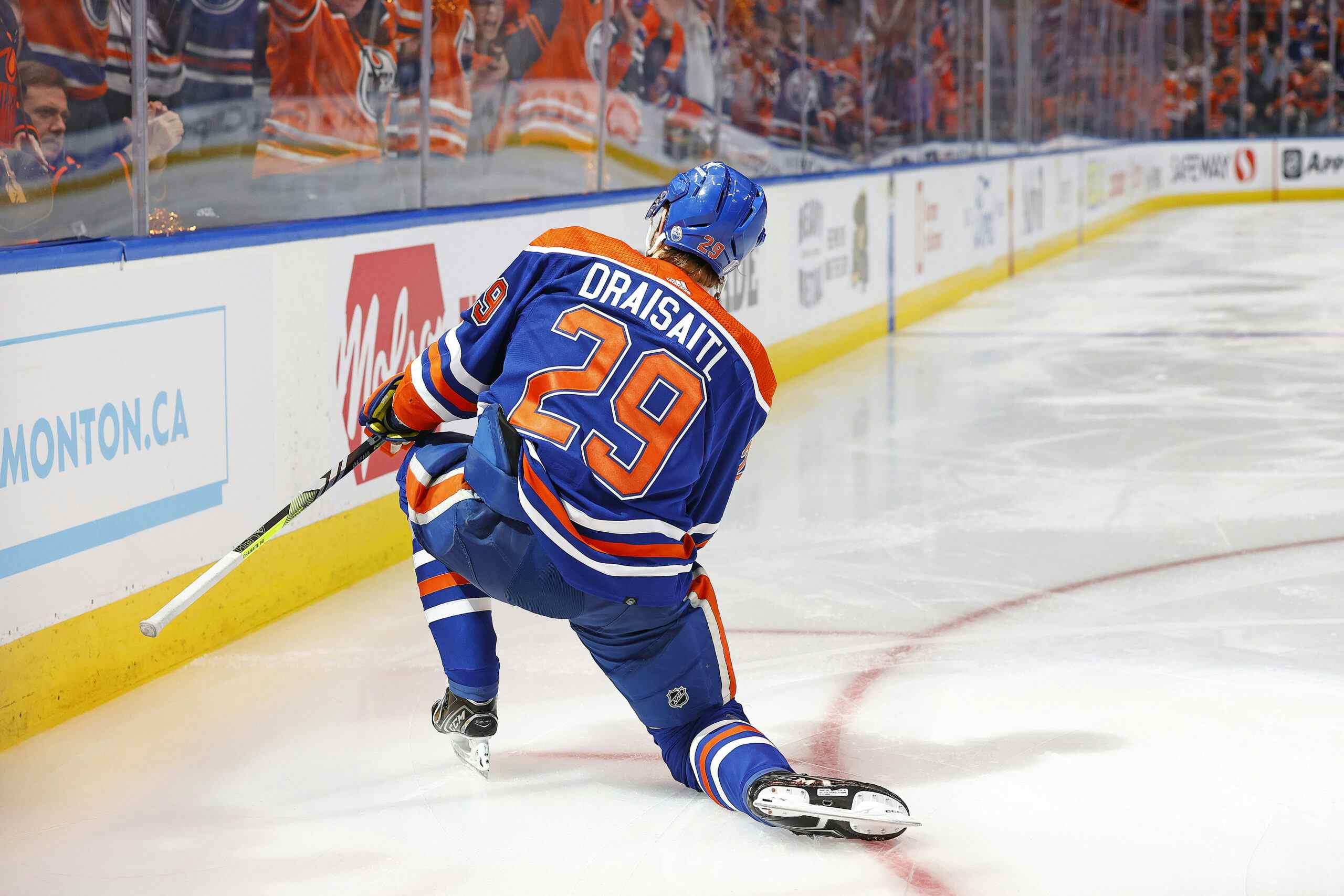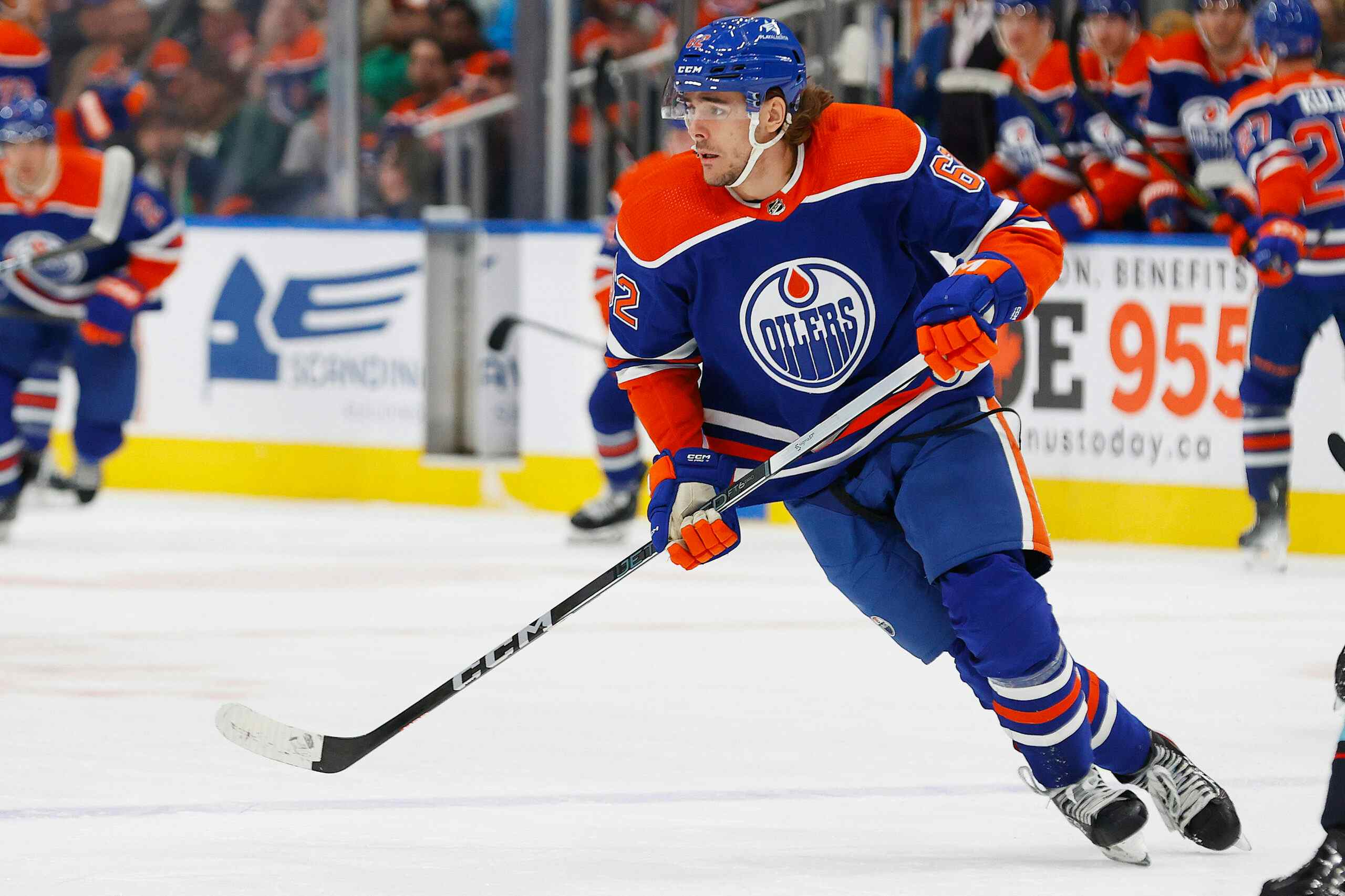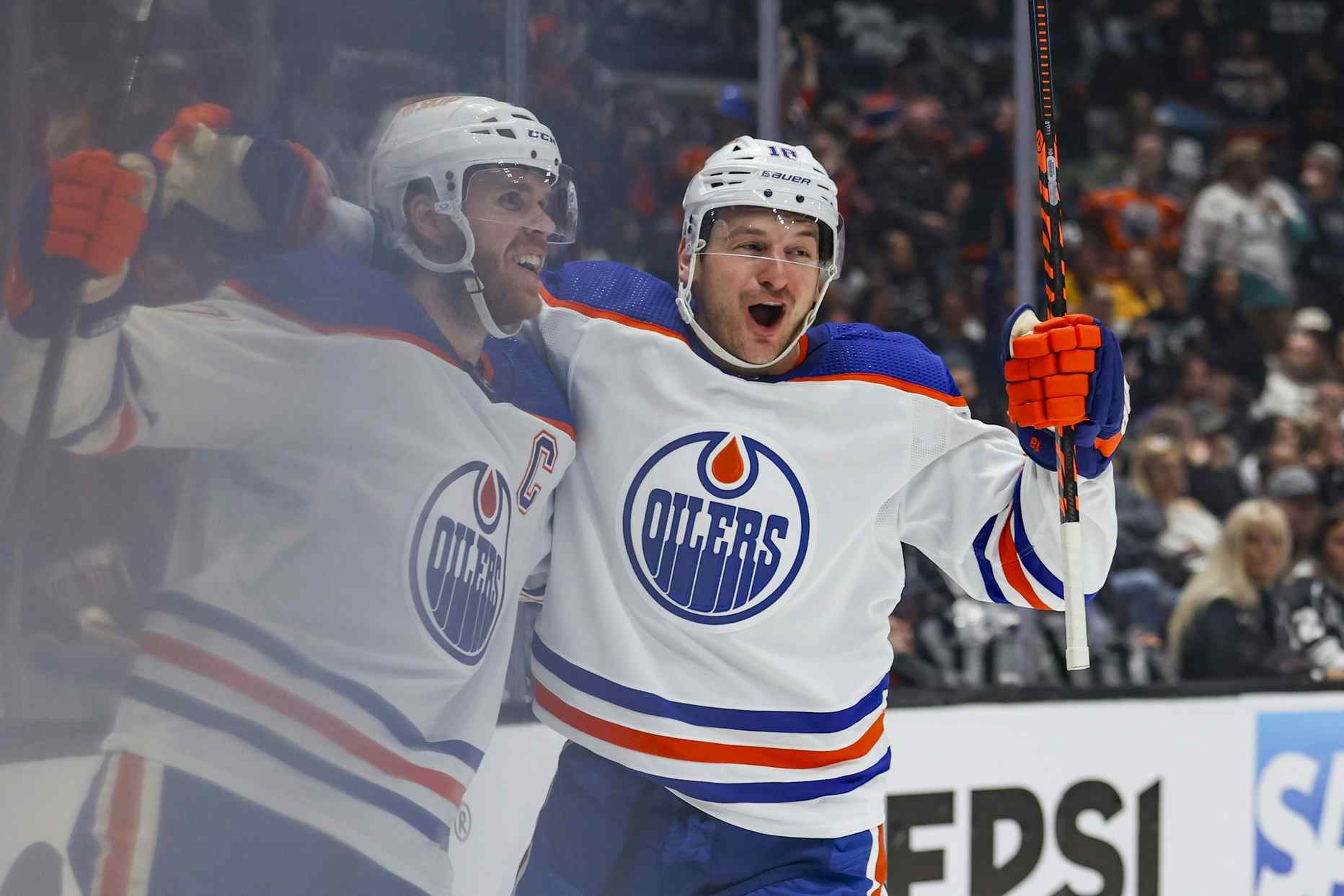Andrej Sekera, No. 1 Defenceman

The Edmonton Oilers have taken a defence-by-committee
approach this season. Oscar Klefbom and Kris Russell both play a lot, just
under 22 minutes per game. Adam Larsson’s numbers are skewed a little by not
taking on any kind of offensive role, but he too is over the 20-minute mark on
average.
approach this season. Oscar Klefbom and Kris Russell both play a lot, just
under 22 minutes per game. Adam Larsson’s numbers are skewed a little by not
taking on any kind of offensive role, but he too is over the 20-minute mark on
average.
At the top of the depth chart is Andrej Sekera. The best
defenceman to enter unrestricted free agency in the summer of 2015, Sekera has
emerged as an all-situations workhorse for the Oilers and their top overall blueliner.
defenceman to enter unrestricted free agency in the summer of 2015, Sekera has
emerged as an all-situations workhorse for the Oilers and their top overall blueliner.
There isn’t a whole lot of question as to who is driving
Sekera’s results at 5-on-5. It’s Sekera.
Sekera’s results at 5-on-5. It’s Sekera.

Sekera’s primary defensive partner this season has been
Russell. Together, the two have generally played tough opponents, having
displaced the Klefbom/Larsson pairing as the primaries in that role, though
there isn’t a lot of gap. Sekera/Russell have also been given a steady diet of
defensive zone starts.
Russell. Together, the two have generally played tough opponents, having
displaced the Klefbom/Larsson pairing as the primaries in that role, though
there isn’t a lot of gap. Sekera/Russell have also been given a steady diet of
defensive zone starts.
Together, they have a 46% Corsi rating, which isn’t great.
But when they’re on the ice, the Oilers allow just over a single goal per hour
at 5-on-5, which is a tremendous number.
But when they’re on the ice, the Oilers allow just over a single goal per hour
at 5-on-5, which is a tremendous number.
Away from Russell, Sekera has mostly played with rookie Matt
Benning. With that pairing on the ice (in softer minutes, it must be said) the
Oilers take 58% of the Corsis and 59% of the goals. When Russell’s on the ice
away from Sekera, the Oilers take 47% of the Corsis and 45% of the goals.
Benning. With that pairing on the ice (in softer minutes, it must be said) the
Oilers take 58% of the Corsis and 59% of the goals. When Russell’s on the ice
away from Sekera, the Oilers take 47% of the Corsis and 45% of the goals.
I’m skeptical as to whether the good results that
Sekera/Russell have put up together can be sustained. My old Journal colleague David Staples has
made the argument that Russell (and by extension this pairing) is so
airtight in the defensive zone that they can outperform their shot metrics over
the long haul, and doubtless some readers will find that argument convincing.
Sekera/Russell have put up together can be sustained. My old Journal colleague David Staples has
made the argument that Russell (and by extension this pairing) is so
airtight in the defensive zone that they can outperform their shot metrics over
the long haul, and doubtless some readers will find that argument convincing.

For my part, I don’t think it’s a surprise that both Sekera
and Russell have on-ice goal totals exactly in-line with their Corsi totals when
separated from each other. Goals follow shots for the vast majority of players
the vast majority of the time.
and Russell have on-ice goal totals exactly in-line with their Corsi totals when
separated from each other. Goals follow shots for the vast majority of players
the vast majority of the time.
So far, though, that pairing is working. And given the
circumstances (tough minutes, a left-shot partner on the right side) it’s difficult
to be too critical of its failings driving possession. It would be particularly foolish to be overly critical of Sekera, who has found a way to keep his head above
water with Russell, Benning and with Mark Fayne last year.
circumstances (tough minutes, a left-shot partner on the right side) it’s difficult
to be too critical of its failings driving possession. It would be particularly foolish to be overly critical of Sekera, who has found a way to keep his head above
water with Russell, Benning and with Mark Fayne last year.
Sekera is also having a strong year on both special teams.
Edmonton’s penalty kill is about average league-wide, but both shots and goals
against improve when Sekera is out there. The “Shinpad Assassin” is somewhat
limited as a No. 1 power play defenceman, but he’s been good enough to hang on
to a top unit job on a revitalized man advantage clicking in on north of 20% of
its opportunities.
Edmonton’s penalty kill is about average league-wide, but both shots and goals
against improve when Sekera is out there. The “Shinpad Assassin” is somewhat
limited as a No. 1 power play defenceman, but he’s been good enough to hang on
to a top unit job on a revitalized man advantage clicking in on north of 20% of
its opportunities.

Eventually, one would hope that Sekera is asked to do a
little less of the heavy lifting. One of the big arguments for pursuing P.K.
Subban this past summer was the idea that Edmonton was going to need a marquee
talent to lead the blue line, and right now that player isn’t on the roster.
little less of the heavy lifting. One of the big arguments for pursuing P.K.
Subban this past summer was the idea that Edmonton was going to need a marquee
talent to lead the blue line, and right now that player isn’t on the roster.
Klefbom’s defensive zone play is still a concern. Larsson’s
play with the puck limits him. Russell’s already overachieving as-is. That
leaves Sekera in the No. 1 role by default, the jack-of-all-trades who can be
used by the coach in any situation, against any opponent and with any kind of
partner with at least some expectation of success.
play with the puck limits him. Russell’s already overachieving as-is. That
leaves Sekera in the No. 1 role by default, the jack-of-all-trades who can be
used by the coach in any situation, against any opponent and with any kind of
partner with at least some expectation of success.
Those are not easy players to find. Peter Chiarelli and his
staff deserve credit for identifying Sekera in the summer of 2015 and paying
what was necessary to get him to come to a rebuilding Oilers team. Sekera in
turn deserves credit for so ably handling an incredibly difficult assignment.
He’s been a critical and often under-recognized component of Edmonton’s turnaround
this season.
staff deserve credit for identifying Sekera in the summer of 2015 and paying
what was necessary to get him to come to a rebuilding Oilers team. Sekera in
turn deserves credit for so ably handling an incredibly difficult assignment.
He’s been a critical and often under-recognized component of Edmonton’s turnaround
this season.
Recent articles from Jonathan Willis





